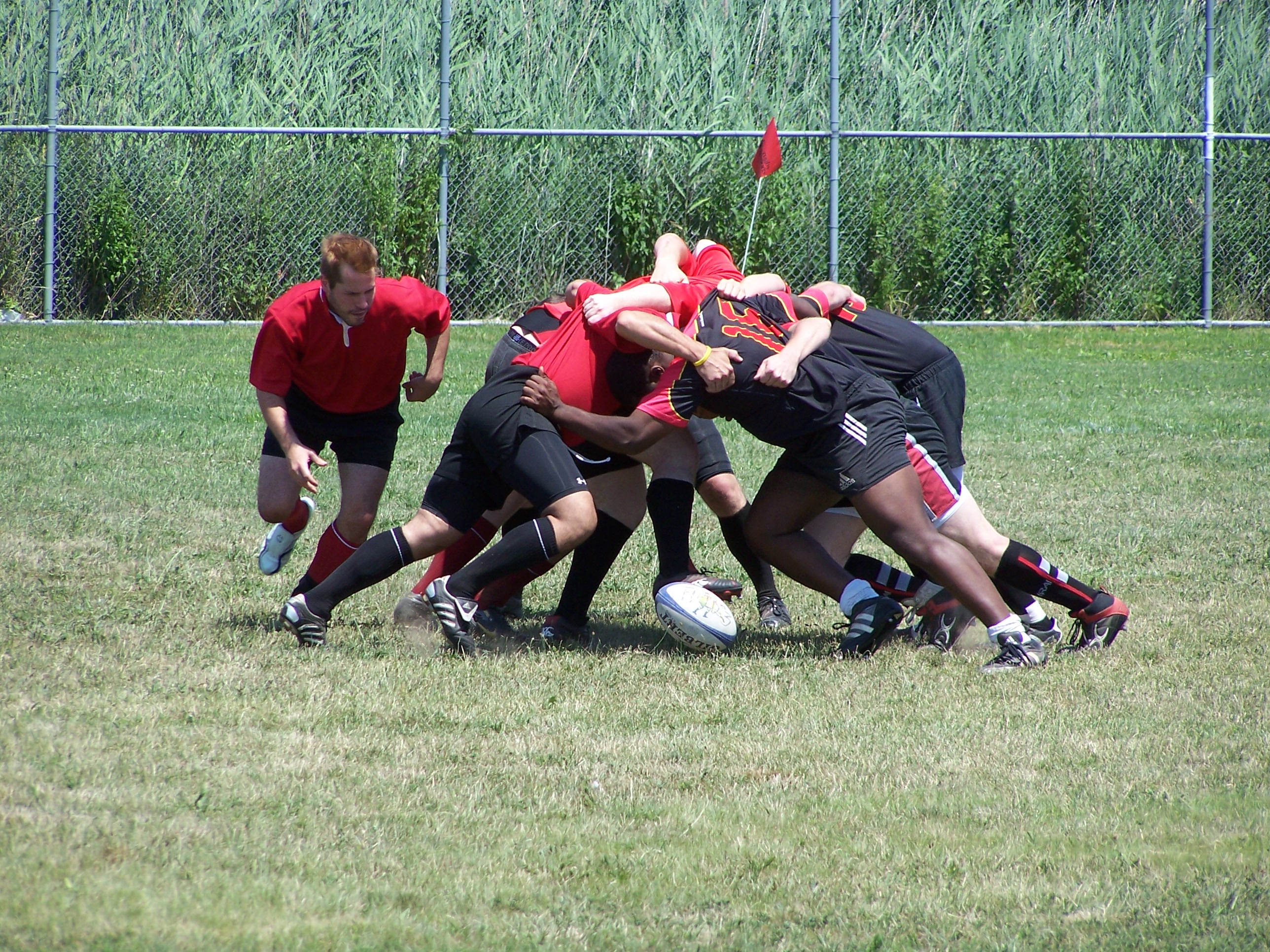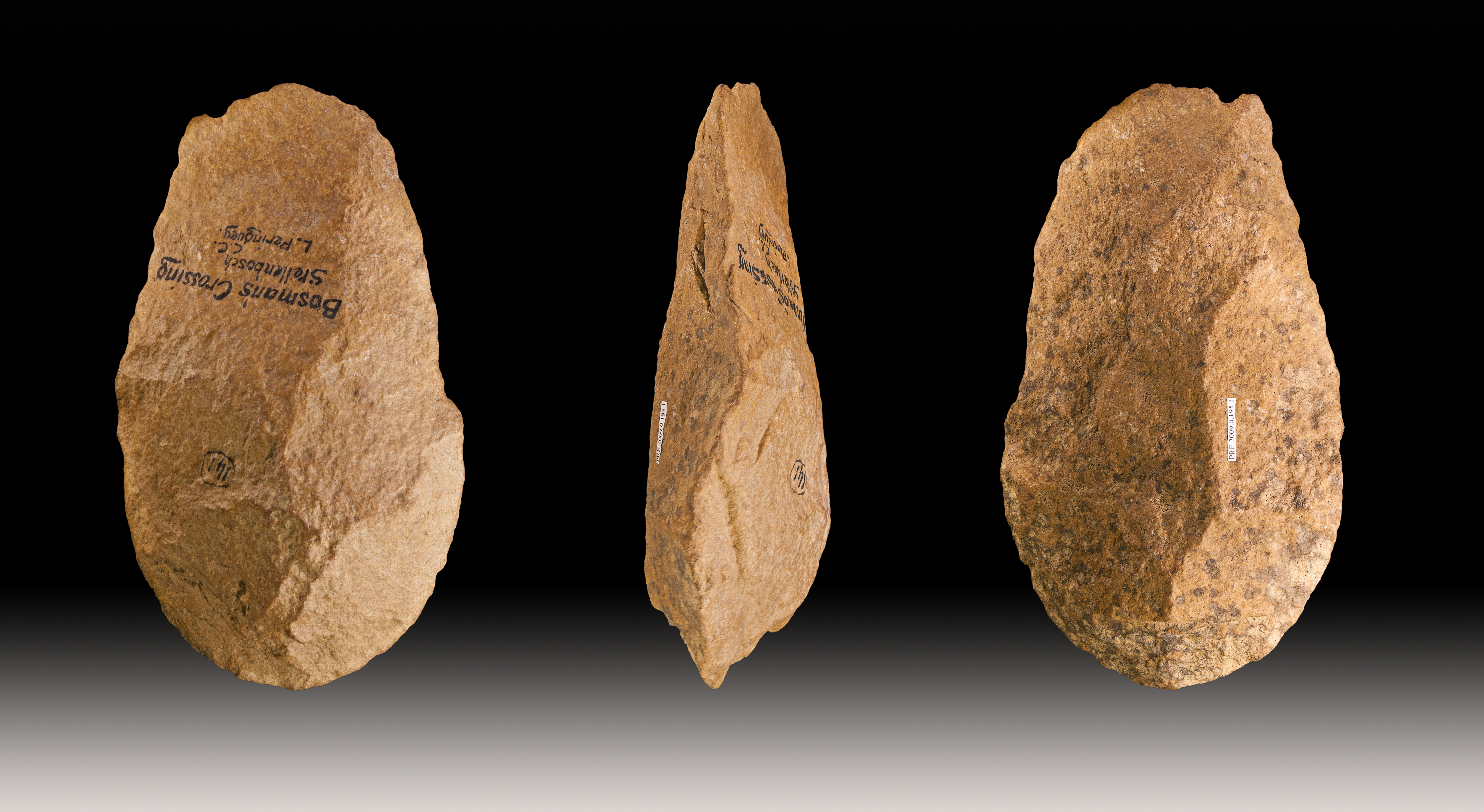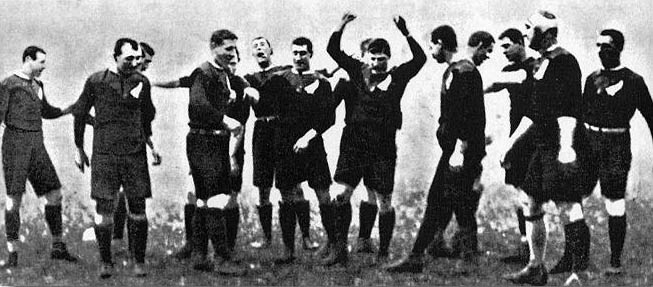|
Scrum (rugby Union)
In rugby union a scrum is a means of restarting play after a minor infringement. It involves up to eight players from each team, known as the pack or forward pack, binding together in three rows and interlocking with the three opposing teams front row. At this point the ball is fed into the gap between the two forward packs and they both compete for the ball to win possession. Teams can be penalised for intentionally causing the scrum to collapse, and for not putting the ball into the scrum correctly. A scrum is most commonly awarded when the ball is knocked forward, or passed forward, or when a ball becomes trapped in a ruck or maul. Because of the physical nature of scrums, injuries can occur, especially in the front row. Overview To prepare for a scrum, each team's eight forwards (referred to as the ''pack'' or ''forward pack'') bind together in three rows — the front row, second row and back row. The front row is composed of the two ''props'' and the '' hooker''. To the ... [...More Info...] [...Related Items...] OR: [Wikipedia] [Google] [Baidu] |
Scrum Machine
A scrum machine, or scrummaging machine, is a padded, weighty device against which a pack of rugby football forwards can practice scrummaging and rucking. The purpose of the scrum machine is to provide teams with a safe tool with which to improve the strength and skills of their players. The ideal engagement of a pack into a scrum is a simultaneous movement in the hit, shunt and drive. It is the instantaneous force exerted that makes the difference, not the sum of all the forces over time. Even small packs that coordinate in this fashion and hit 'on the beat' can control their scrums consistently. A similar piece of equipment called a blocking sled is used by American football players. Scrum machine types The most common types are either the sled or the roller. However, there are others, often for specific purposes or needs. * Roller Machine * Indoor * Junior - For training children. * One-man - Against which forwards, rather than a pack, can practice their scrum skills. * ... [...More Info...] [...Related Items...] OR: [Wikipedia] [Google] [Baidu] |
Danie Craven
Daniël Hartman Craven (11 October 1910 – 4 January 1993) was a South African rugby union player (1931–1938), national coach, national and international rugby administrator, academic, and author. Popularly known as Danie, Doc, or Mr Rugby, Craven's appointment from 1949 to 1956 as coach of the Springboks signalled "one of the most successful spells in South African rugby history" during which the national team won 74% of their matches. While as a player Craven is mostly remembered as one of rugby's greatest dive-passing scrumhalves ever, he had also on occasion been selected to play for the Springboks as a centre, fly-half, No.8, and full-back. As the longest-serving President of the South African Rugby Board (1956–93) and chairman of the International Rugby Board (1962, 1973, 1979), Craven became one of the best-known and most controversial rugby administrators. In 1969, Craven sparked outrage among anti-apartheid activists when he allegedly said, "There will be ... [...More Info...] [...Related Items...] OR: [Wikipedia] [Google] [Baidu] |
August Frederick Markötter
August Frederick 'Oubaas Mark' Markötter (1878–1957) was a South African rugby union player and national selector who coached Stellenbosch Rugby Football Club from 1903-57. As coach he not only turned Maties into the world's largest rugby club but forged 50 of his players into Springboks and got nearly 150 of his players selected for the Western Province team. Eleven of the 1906 Springbok touring squad to Britain "had developed under him at Stellenbosch". Markötter popularized the 3-4-1 scrumming formation which is now standard in rugby union, and thus created the position of eighthman as a loose forward. He has also been credited with entrenching the swing-pass among his players. Markötter was "one of the most influential and significant personalities in South African rugby, which he dominated" between 1903 and 1957. Early life August Frederick Markötter, better known as 'Oubaas Mark' or 'Mr Mark', was born on 10 June 1878 on the Berlin Missionary Society's Haarlem m ... [...More Info...] [...Related Items...] OR: [Wikipedia] [Google] [Baidu] |
Stellenbosch
Stellenbosch (; )A Universal Pronouncing Gazetteer. Thomas Baldwin, 1852. Philadelphia: Lippincott, Grambo & Co.A Grammar of Afrikaans. Bruce C. Donaldson. 1993. Berlin: Walter de Gruyter. is a town in the Western Cape province of South Africa, situated about east of Cape Town, along the banks of the Eerste River at the foot of the Stellenbosch Mountain. The town became known as the City of Oaks or ''Eikestad'' in Afrikaans and Dutch language, Dutch due to the large number of oak trees that were planted by its founder, Simon van der S ... [...More Info...] [...Related Items...] OR: [Wikipedia] [Google] [Baidu] |
Paddy Carolin
Harold "Paddy" Carolin (1881-1967) was a rugby union player who represented South Africa and is credited with conceiving both the 3-4-1 scrum formation and helping choose the name 'Springboks' for the South African national side. Carolin was the second player ever to serve as captain abroad, following Paul Roos. Carolin was born on 10 April 1881 in Alicedale in the Eastern Cape and attended Diocesan College in Cape Town. At school he won the award for best all-round sportsman for four years consecutive years, and was captain of both the rugby and cricket teams. Carolin's first club was Villager Football Club, a Cape Town side. In 1903 Carolin is selected at centre alongside Japie Krige for the 3rd test against the touring British side at Newlands on 12 September 1903. He is captain of Villagers when he is chosen as vice-captain for the 1906-07 Springbok tour of Great Britain, Ireland, and France. Roos, Carolin, and team manager J C Carden chose the name 'Springboks' whil ... [...More Info...] [...Related Items...] OR: [Wikipedia] [Google] [Baidu] |
Fairy Heatlie
Barry "Fairy" Heatlie (25 April 1872 – 19 August 1951) Scrum.com was a player, representing both and . He was the fifth of the South African rugby union team and is attributed as the man who gave the Sp ... [...More Info...] [...Related Items...] OR: [Wikipedia] [Google] [Baidu] |
World Rugby
World Rugby is the world governing body for the sport of rugby union. World Rugby organises the Rugby World Cup every four years, the sport's most recognised and most profitable competition. It also organises a number of other international rugby competitions, such as the World Rugby Sevens Series, the Rugby World Cup Sevens, the World Under 20 Championship, and the Pacific Nations Cup. World Rugby's headquarters are in Dublin, Ireland. Its membership now comprises 120 national unions. Each member country must also be a member of one of the six regional unions into which the world is divided: Africa, Americas North, Asia, Europe, South America, and Oceania. World Rugby was founded as the International Rugby Football Board (IRFB) in 1886 by , and , with joining in 1890. , and became full members in 1949. became a member in 1978 and a further 80 members joined from 1987 to 1999. The body was renamed the International Rugby Board (IRB) in 1998, and took up its current name o ... [...More Info...] [...Related Items...] OR: [Wikipedia] [Google] [Baidu] |
New Zealand
New Zealand ( mi, Aotearoa ) is an island country in the southwestern Pacific Ocean. It consists of two main landmasses—the North Island () and the South Island ()—and over 700 smaller islands. It is the sixth-largest island country by area, covering . New Zealand is about east of Australia across the Tasman Sea and south of the islands of New Caledonia, Fiji, and Tonga. The country's varied topography and sharp mountain peaks, including the Southern Alps, owe much to tectonic uplift and volcanic eruptions. New Zealand's capital city is Wellington, and its most populous city is Auckland. The islands of New Zealand were the last large habitable land to be settled by humans. Between about 1280 and 1350, Polynesians began to settle in the islands and then developed a distinctive Māori culture. In 1642, the Dutch explorer Abel Tasman became the first European to sight and record New Zealand. In 1840, representatives of the United Kingdom and Māori chiefs ... [...More Info...] [...Related Items...] OR: [Wikipedia] [Google] [Baidu] |
Thomas Ellison
Thomas Rangiwahia Ellison, also known as Tom Ellison or Tamati Erihana (c. 1867 – 2 October 1904) was a New Zealand rugby union player and lawyer. He led the first New Zealand representative rugby team organised by the New Zealand Rugby Football Union (NZRFU) on their 1893 tour of Australia. Ellison also played in the 1888–89 New Zealand Native football team on their epic 107-match tour, scoring 113 points, and 43 tries with the side. Born in Ōtākou, Otago Heads, Ellison was educated at Te Aute College, where he was introduced to rugby. After moving to Wellington, Ellison played for the Poneke Football Club, and was selected to play for Wellington province. He was recruited into Joe Warbrick's privately organised Native football team in 1888, and continued to play for both Poneke and Wellington on his return from that tour. In 1892, he started to refine and popularise the wing-forward system of play, which was a vital element of New Zealand rugby's success until 1 ... [...More Info...] [...Related Items...] OR: [Wikipedia] [Google] [Baidu] |
The Original All Blacks
The Original All Blacks (also known simply as "The Originals") were the first New Zealand national rugby union team to tour outside Australasia. They toured the British Isles, France and the United States of America during 1905–1906. Their opening game, on 16 September 1905, was against Devon whom they defeated 55–4. They defeated every English side that they faced, including a 16–3 victory over English county champions Durham, and a 32–0 victory over Blackheath. They defeated Scotland, Ireland, and England with the closest of the three matches their 12–7 victory over Scotland. The team's only loss of the tour was a 3–0 defeat by Wales at Cardiff Arms Park. A try claimed by winger Bob Deans was not awarded by the referee and later became a subject of controversy. However, Wales were generally considered the better team with the All Blacks playing particularly poorly in the first half of the game. They managed narrow wins against four Welsh club teams and went on to p ... [...More Info...] [...Related Items...] OR: [Wikipedia] [Google] [Baidu] |





